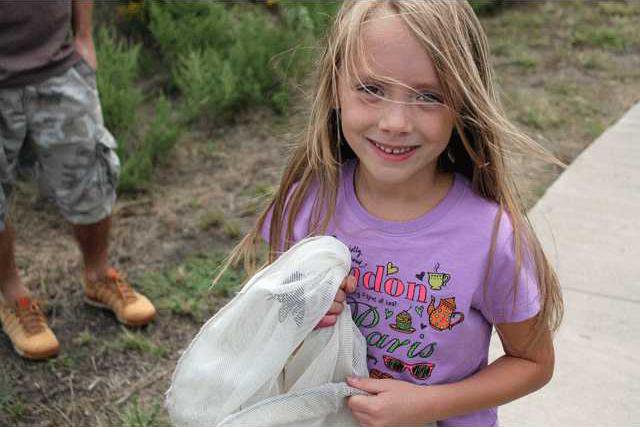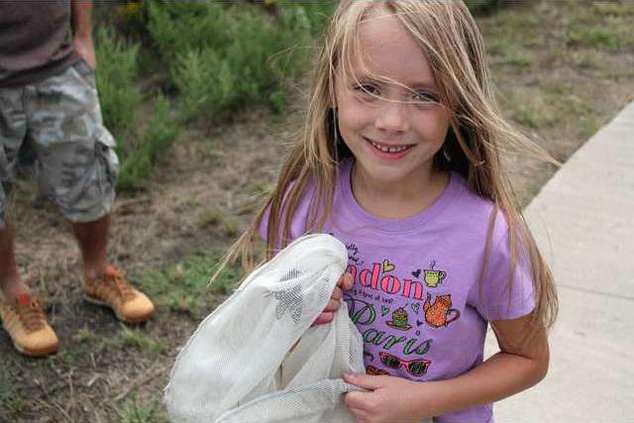By Veronica Coons
vcoons@gbtribune.com
Wonder and fascination with nature took wing Saturday as people of all ages, from mothers with babies to retired persons, came to the Kansas Wetlands Education Center north of Great Bend to lend a hand capturing tagging Monarch butterflies. But the late summer beauties failed to show once more in significant numbers, though a handful were caught over the course of the morning. Still, kids, had a great time catching other varieties, as well as abundant dragonflies and toads.
“KWEC has become involved with this project because it’s a great way to introduce kids and adults to science, gets them outdoors, and helps draw attention to the plight of the monarch butterfly,” Martin said.
The tagging project is an ongoing research project through the University of Kansas Monarch Watch. In past years, Monarch butterflies have been recovered at overwintering sites in Central Mexico, about 1,125 miles away.
This is the second year in a row that Martin has been saddened by the low numbers.
“The cold, wet spring across the country was not good for egg hatching and Monarch Watch reports very low numbers,” she said.
Locally, the ongoing drought is partially responsible, but another culprit may be the efficiency of modern day farming techniques.
One of the most important plants Monarch butterflies need to keep populations healthy is the common milkweed. They used to be found abundantly in corn fields all across the Midwest, but now, with the introduction of BT corn, the fields are clean, Martin said. And with more and more agricultural land that used to be CRP designated being put back into production, milkweed is being eliminated from yet another location.
That’s why volunteers were offering participants in Saturday’s event the opportunity to take home milkweed plants to grow in home gardens. She hopes educating people about the importance of the plant will help
“The big thing is habitat loss, here, in Canada, and in Mexico,” Martin said. “In Mexico, the Monarch’s winter home forests are continuing to be harvested for lumber.”
It wasn’t until 1975 that these forests were discovered, so there is only limited data on the species. Nobody knows what the critical level is where the migration will be loss, she said.
Early in August, the KWEC hosted a butterfly count, which brought observers out covering the area around Cheyenne Bottoms Wildlife Area. They counted and identified several varieties of butterflies at that time. Few Monarchs were spotted. Since then, few more have arrived.
The KWEC butterfly garden was in full bloom Saturday also, helping participants envision ways to attract butterflies to their homes.
“Flowers that have a flat surface - zinnias, sunflowers, sedum - goldenrod - all are preferred,” Martin said. “Also some flowers have “butterfly” nectar, with a lower sugar content and different amino acid percentages than “bee” flowers.”
According to Martin, in recent years, the World Wildlife Fund put the monarch migration in their top 10 of species in trouble or in danger of losing the migration. Participants in Saturday’s event were offered free milkweed plants to take home. The plants, which the caterpillars feed on in the wild have been lost as more fields are converted from CRP to production.
Monarch Madness is one ingredient in Great Bend’s “Melting Pot Month.”
Mad about Monarchs
Wetlands Education Center butterfly capturing event





